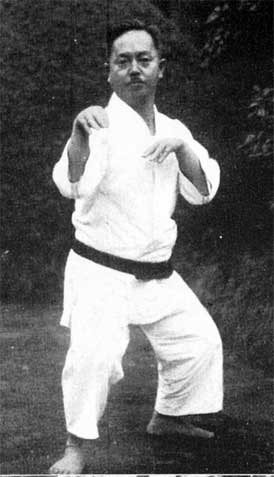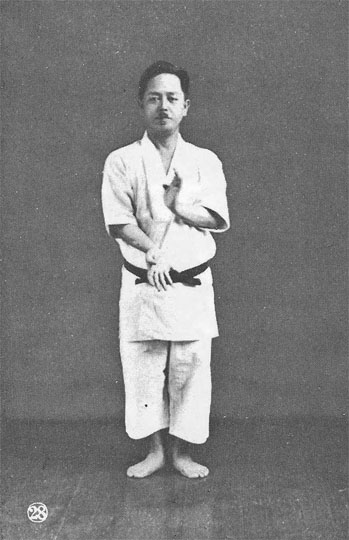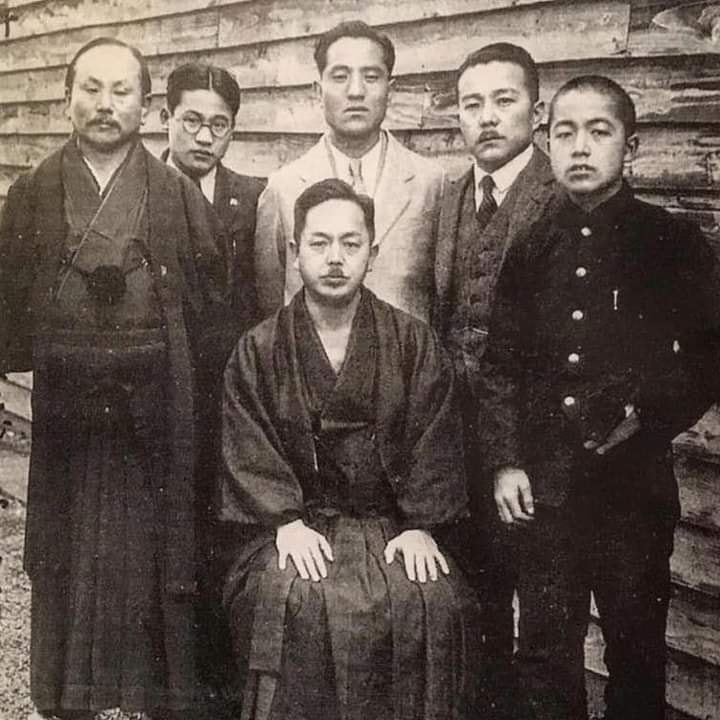Learn about the Shito-Ryu History
Origin of Shito-Ryu
Shito-Ryu is a karate style that originated in Okinwana, Japan. It was founded in the early 20th century by Kenwa Mabuni and is today considered as one of the four main styles of the karate art. Shito-Ryu is a synthesis of the Okinawan Shuri-te and Naha-te, the two major styles of Okinawan Karate.
Kenwa Mabuni developed Shito-Ryu after being taught in Shuri-te by Ankō Yasutsune Itosu and in Naha-te by Higaonna Kanryō. Mabuni originally called his style Hanko-Ryu, but in honour of his two teachers he changed his mind and derived the name from the kanji characters in their names: Itosu (= Shi) and Higashionna (= To).


Characteristics of Shito-Ryu
While both Itosu and Higashionna taught a hard-soft style of Okinawan ‚te‘, but their methods and emphases were still different:
the Itosu syllabus
included straight and powerful techniques on the one hand and
the Higashionna syllabus
stressed circular motion and shorter fighting methods on the other hand.
In developing his own karate style, Mabuni Kenwa has created a combination of both. That is the reason why Shito-Ryu emphasizes a balance between the physical strength and long powerful stances of Shuri-te derived styles such as Shorin-Ryu and Shotokan on the one hand, and the circular and eight-directional movements, breathing power, and hard and soft characteristics of Naha-te styles such as Uechi-Ryu and Goju-Ryu on the other hand.

Uke no go gensoku (受けの五原則)
The Five Rules of Defence
In addition to the characteristics, Shito-Ryu also formalises and emphasises the five rules of defence developed by Kenwa Mabuni. These five rules and principles are known as Uke no go gensoku (受けの五原則), Uke no go genri (受けの五原理) or Uke no go ho (受けの五法).
Rakka (落花)
Rakka means "falling petals" and is the art of blocking with such force and precision that the opponent's movement is completely destroyed. Examples of rakka are the most well-known blocks, such as gedan-barai or soto-uke.
Ryusui (流水)
Ryusui means "running water" and is the art of flowing around the attacker's motion, and through it, soft blocking. Examples are nagashi-uke and osae-uke.
Kusshin (屈伸)
Kusshin means "elasticity" and is the art of bouncing back, storing energy while recoiling from the opponent's attack, changing or lowering stance only to immediately unwind and counterattack. Examples are stance transitions zenkutsu to kōkutsu and moto-dachi to nekoashi-dachi.
Ten'i ( 転位)
Ten'i means "transposition" and is the utilization of all eight directions of movement, most importantly stepping away from the line of attack.
Hangeki (反撃)
Hangeki means "counterattack" and it is a defense which is an attack which at the same time deflects the opponent's attack before it can reach the defender. Examples of this are various kinds of tsuki-uke, including yama-tsuki.
